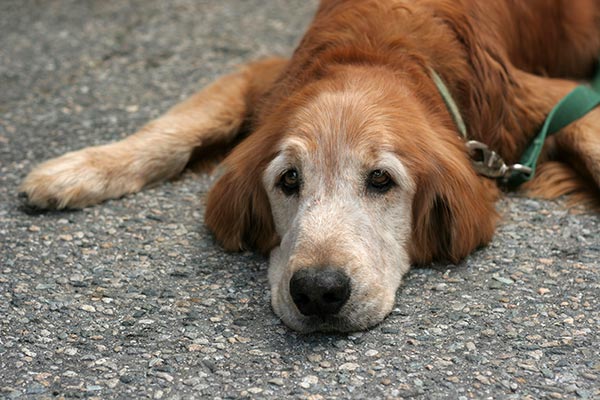Understanding Disc Disease in Dogs

One day you’re playing with your dog at the dog park, watching her running, jumping and just having a great time like always. The next day your dog won’t run. She won’t jump. She’s whimpering and sitting with a hunched back. Maybe she wouldn’t eat that morning. What’s wrong?
Unfortunately, your furry friend can’t tell you what she’s feeling herself, but you know her well enough to understand that something isn’t right. While you try to get an appointment with the vet, you start doing your own research and come across something you may not have heard of before: intervertebral disc disease.
What Is Intervertebral Disc Disease?
Intervertebral disc disease is when the discs of cartilage that cushion the vertebrae of the spinal column become dislocated and press on the delicate spinal cord.
Dogs often experience a hardening of their discs, which causes the discs to break down over time and then slip out of place during high-impact activities like jumping and running. These slipped discs compress your dog’s spinal cord, causing severe pain and blocking nerve impulses necessary for important functions like moving her legs and controlling her bladder. Ultimately your dog can suffer from paralysis and complete loss of bladder and bowel control.
It’s no wonder dogs suffering from disc disease don’t feel like playing!
What Are the Symptoms of Disc Disease?
If you are reading about disc disease in dogs, you’ve probably already noticed signs that your pet is sick. Here are the most common symptoms of intervertebral disc disease in dogs:
- Anxious behavior
- Reduced appetite
- Crying out in pain
- Loss of bladder and/or bowel control
- Unwillingness to run or jump
- Reduced activity level in general
- Weakness in rear legs
- Hunched back or neck
- Tense muscles in back or neck
- Muscle spasms in back or neck
- Paralysis
You know your dog best and will notice if she’s displaying any of these signs. If she is, make sure you make that vet appointment soon. Disc disease isn’t something that will just go away on its own with a little rest. You need a professional to examine your pet and prescribe the best course of action for treating it.
Treating Disc Disease
If your dog’s vet diagnoses her with intervertebral disc disease, do not fear. There are many treatment options for this canine disease. The treatment your vet chooses will be based on the severity of your dog’s disc disease.
For more mild cases, drugs like steroids and anti-inflammatories are recommended to reduce painful swelling of your dog’s spinal cord. You may also be instructed to crate your dog for a number of weeks for recuperation before returning to her normal activities.
If your dog is experiencing muscle spasms, applying heat and using massage techniques in combination with prescribed muscle relaxants can relieve the symptom.
Luckily, most dogs with mild to moderate disc disease will recover proper nerve function and be able to enjoy their regular activities again after treatment.
For dogs who have suffered more severe disc and spinal damage, emergency surgery may be required. Typically a portion of the vertebrae will be removed in order to give the compressed spinal cord more space. Afterward, your dog will require rest and rehabilitation before regaining her previous health.
Unfortunately, not all dogs recover with surgery. That’s why it’s important to take your dog in for regular veterinary check-ups and to schedule an exam as soon as you start noticing symptoms so you can prevent severe and irreparable damage. The sooner a dog is diagnosed and treated, the better the outcome.
Healthy Dog, Happy Dog
As a pet owner, you know your dog is happiest when she’s healthy and active. You can help her stay that way by taking preventative measures to stop disc disease in its tracks. Help your dog maintain a healthy weight to reduce stress on her vertebrae. Use a harness on dogs who tend to pull at their leash and provide steps and ramps for smaller dogs to get up onto furniture. All of these will help relieve the pressure exerted on your dog’s vertebrae on a daily basis and keep everything in place.
Preventing and seeking immediate treatment for disc disease in your dog will pay off in the long run. Your dog won’t be able to tell you in words how much she appreciates your help in keeping her healthy and active, but you’ll be rewarded with a happy dog who loves to join you in your favorite activities together for many years to come.
If your dog is showing symptoms of possible disc disease or other concerning symptoms, it’s vital that you call the vet. The experts at Academy Animal Hospital are always available to answer questions and help you find a diagnosis for your precious pet.
